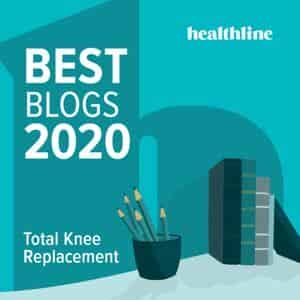You are using an out of date browser. It may not display this or other websites correctly.
You should upgrade or use an alternative browser.
You should upgrade or use an alternative browser.
PKR Vitamin D deficiency
- Thread starter TraceyD123
- Start date
- Status
- Not open for further replies.
Tracey, I am very concerned that you are still in this much pain after 8 months. This isn't right. Can you tell me more about the pain? For instance, pinpoint the exact spot it hurts using this chart - give a vertical and a horizontal number for each box.

I'd also like to know how much it hurts on a scale of 1-10 (1=no pain, 10=worst pain imaginable), when it hurts and what kind of pain it is - soreness, burning, stabbing, throbbing, aching, swelling or just stiffness
I'd also like to know how much it hurts on a scale of 1-10 (1=no pain, 10=worst pain imaginable), when it hurts and what kind of pain it is - soreness, burning, stabbing, throbbing, aching, swelling or just stiffness
Titianlady
post-grad
I take a 1000 iu a day, when tested my blood levels are normal.
1000 units a day is good. Unfortunately my Dr had me on 5000 per day, and after a year of taking that doseage, my levels were far, far too high!
Poppet
Nutritional Advisor
- Joined
- Sep 5, 2011
- Messages
- 14,946
- Country
 Australia
Australia
- Gender
- Female
The word 'vitamin' means something the body is unable to manufacture and must be obtained from food.
Vitamin D is a hormone, a chemical that we make on our skin from sun exposure from a specific wave length of light, UVB. Every decade our vitamin D production (per hour of sun exposure) goes down and of course where we live is an important aspect to obtaining Vitamin D from sun exposure.
Vitamin D is a group of fat-soluble secosteroids which controls calcium levels in the blood by promoting calcium absorption in the gut to maintain adequate serum calcium and phosphate concentrations to enable normal mineralization of bone.
It is also needed for bone growth and bone remodeling (very important for us joint replacement folk) by cells such as osteoblasts and osteoclasts (these cells arise from marrow stromatolites cells and are found on the surfaces where bone is being formed). Without sufficient vitamin D, bones can become thin, brittle, or misshapen. It is crucial for bone and muscle development, and together with calcium helps in the prevention of osteoporosis.
For us humans the most important related compounds of vitamin D are vitamin D2 and vitamin D3.
Very few foods in nature contain vitamin D. The flesh of fatty fish (such as salmon, tuna, and mackerel) and fish liver oils are among the best sources. Small amounts of vitamin D are found in beef liver, cheese, and egg yolks. Vitamin D in these foods is primarily in the form of vitamin D3.
It is a very wise idea to get your Doctor to check your Vitamin D levels.
if you are prescribed a supplement, you may experience cramps in your legs or headaches when you start taking them. This can be caused by low Magnesium. Try eating a handful of sunflower seeds, providing you are not sensitive to seeds.
Vitamin D is a hormone, a chemical that we make on our skin from sun exposure from a specific wave length of light, UVB. Every decade our vitamin D production (per hour of sun exposure) goes down and of course where we live is an important aspect to obtaining Vitamin D from sun exposure.
Vitamin D is a group of fat-soluble secosteroids which controls calcium levels in the blood by promoting calcium absorption in the gut to maintain adequate serum calcium and phosphate concentrations to enable normal mineralization of bone.
It is also needed for bone growth and bone remodeling (very important for us joint replacement folk) by cells such as osteoblasts and osteoclasts (these cells arise from marrow stromatolites cells and are found on the surfaces where bone is being formed). Without sufficient vitamin D, bones can become thin, brittle, or misshapen. It is crucial for bone and muscle development, and together with calcium helps in the prevention of osteoporosis.
For us humans the most important related compounds of vitamin D are vitamin D2 and vitamin D3.
Very few foods in nature contain vitamin D. The flesh of fatty fish (such as salmon, tuna, and mackerel) and fish liver oils are among the best sources. Small amounts of vitamin D are found in beef liver, cheese, and egg yolks. Vitamin D in these foods is primarily in the form of vitamin D3.
It is a very wise idea to get your Doctor to check your Vitamin D levels.
if you are prescribed a supplement, you may experience cramps in your legs or headaches when you start taking them. This can be caused by low Magnesium. Try eating a handful of sunflower seeds, providing you are not sensitive to seeds.
- Joined
- Oct 27, 2011
- Messages
- 29,207
- Location
- United States, West
- Country
 United States
United States
- Gender
- Female
- Status
- Not open for further replies.



 Thank you
Thank you 
